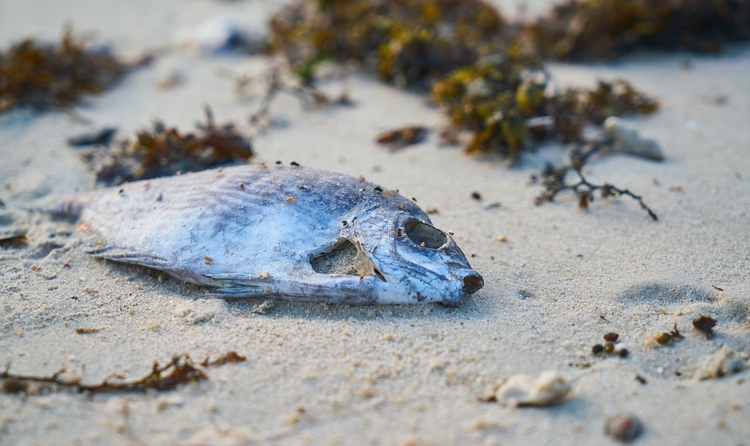What we know about the toxicity of the plastic pellets that are flooding Spain’s northern coastline

What has been said? That the plastic pellets washing up on the shores of Galicia …

What has been said?
That the plastic pellets washing up on the shores of Galicia after spilling from a cargo ship into the Atlantic Ocean are not toxic or dangerous, since they are plastics normally used as a material for producing food packaging.
What do we know?
Although the exact composition of the plastic pellets involved in the spill is still unknown, a number of environmental scientists claim that the plastic in the marine environment is toxic to marine life and can also pose a potential danger to humans.
A lot of disinformation is currently spreading about the toxicity of the pellets carried by sea currents to the shores of Galicia after spilling from the Toconao merchant ship in the Atlantic Ocean on 8 December 2023.
The Environmental Minister of the Galician government, Ángeles Vázquez, recently pointed out in statements to various news outlets that the plastic pellets “are not toxic” or “dangerous”, although “they [still] have to be removed” from the Galician coastline. But to what extent are they not toxic? What does it mean to say they are not dangerous? We’ll explain it to you!
The composition of the pellets is still unknown
The composition of the pellets found along the Galician coast is still unknown to date. The reports commissioned by the Galician government, the full contents of which have not been officially released, suggest that they are plastics normally used as a material for producing food packaging and are therefore not toxic to humans when they come into contact with skin.
However, environmental scientists are also asking about the impact that the pellets could have on marine ecosystems. “Plastic is toxic for all life in the marine environment”, Cristina Romera, chemist and oceanographer at the Institute of Marine Sciences (Institut de Ciències de Mar, or ICM-CSIC) who specialises in researching the consequences of plastic in the ocean, told Verificat.
In this specific case, the reason the spill is toxic is because, once in the marine environment, “these particles will be fragmented into smaller pieces by waves and solar radiation, and the smaller the plastic material is, the more toxic it is, [and] the easier it is to get into living beings”, Ethel Eljarrat, director of the Institute of Environmental Assessment and Water Studies (IDAEA-CSIC), explained in a statement to Science Media Centre España (SMC).
The expert added that “nothing will happen to us by touching these materials […], as it is not acute toxicity”, but “the damage is caused by chronic and continuous exposure” to these elements.
“[The term] toxicity is being used in a very general way” when, in reality, the toxicity of a product depends on aspects “such as the time of exposure, the dose, or the way it comes into contact with the body (whether it is via the skin or is ingested, injected, etc.)”, Patrician Forcén, expert in polymer chemistry, explained in a conversation with Verificat.
Fish mistake the pellets for food
In addition, as Carmen Morales, research scientist in the field of Ecology at the Marine Sciences Institute of the University of Cádiz (UCA), also explained in a statement to the SMC, “marine animals such as fish mistake the pellets for food and eat them”.
The pellets can block the digestive tract of fish or cause abrasion injuries, but, above all, they can cause chemical damage due to the additives they contain or to the contaminants that attach to them.
But, in the long term, it may also be a problem for people who eat fish: “Whatever has accumulated in their bodies will accumulate in ours if we eat them”, the director of the IDAEA-CSIC concluded.
Because we are, in fact, talking about the area where 50% of Spain’s fishing vessels are concentrated – the region with the most ships of this kind – and one of the regions where the most fish are caught. Therefore, it is “fundamental to have all the information about these products, including what type of plastic it is, whether the pellets contain additives and if, in the technical data sheet, there is any kind of specification in this regard”, Herrera agrees.
The prosecutor’s office sees “signs of toxicity”
The Environmental Prosecutor’s Office has opened proceedings because it sees “signs of toxicity”, since the pellets “are not biodegradable” and that, as a result, they cannot be eliminated by natural means.
“They can remain for a long time on the environment – between 50 and 70 years – and break down into smaller particles, creating microplastics”, Herrera warns.